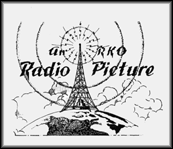
1. Die weiße Hölle vom Piz Palü (1929), aka The White Hell of Pitz Palu, is the feature presentation on German night at Shosanna's cinema, Le Gamaar. An early draft of the Inglourious Basterds script includes this bit of voiceover narration:
To operate a cinema in Paris during the occupation, one had two choices. Either you could show new German propaganda films, produced under the watchful eye of Joseph Goebbels. Or...you could have a German night in your weekly schedule, and show allowed German classic films. Their German night was Thursday.Evidently Goebbels approved of this Bergfilm (a genre of mountaineering adventures popular in Germany in the 20s for their kraut-conquers-nature iconography) co-directed by Georg Wilhelm Pabst and Arnold Fanck (pioneer of the Bergfilm) and starring the statuesque Leni Riefenstahl. Pabst is a pet topic of conversation throughout IB, even getting a nod of respect from our French-Jewish heroine, which embarrasses me as I know nothing of his work. My knowledge of Weimar cinema is mostly limited to Expressionism, whereas Pabst led filmmaking into the counter-movement known as New Objectivity (see Part X below). Riefenstahl began her infamous career as an actress — the epitome of the perfect German female, according to Hitler — and graduated to become the Führer's most favored director of propaganda (see Part VIII).
Addendum: White Hell turns out to be a stupendous adventure film — the most dramatic location photography I've seen in the silent era...flickers of Herzog.

No comments:
Post a Comment